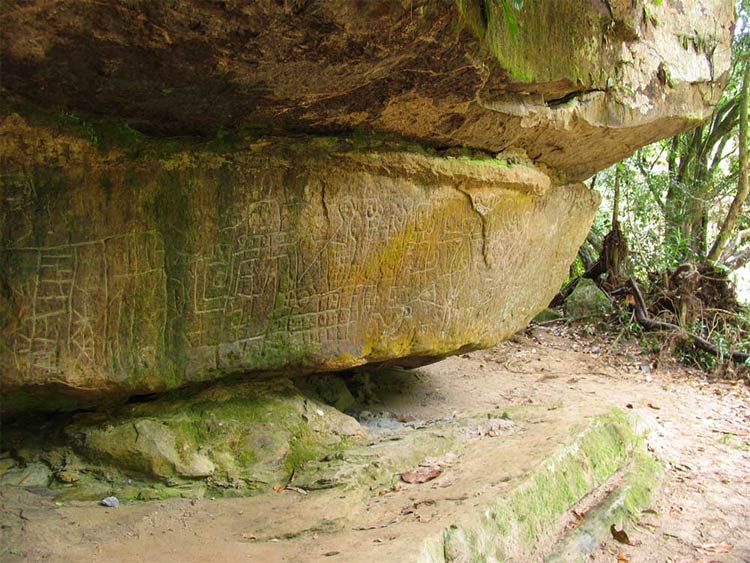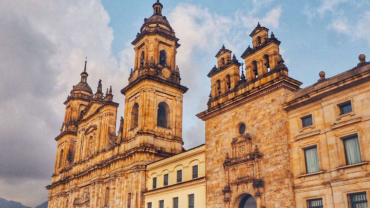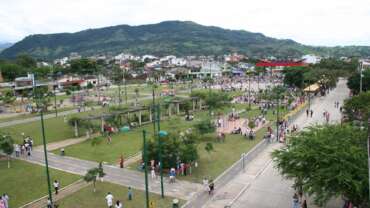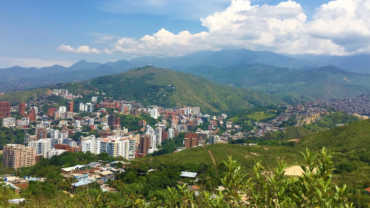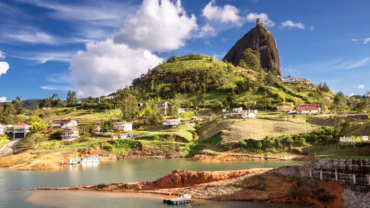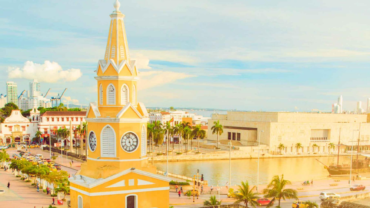Colombian Amazon
The Amazon, a truly unique and majestic place
The longest river in the world preserves a wealth of natural resources and ancient ways of life.
A significant part of Colombia’s rich cultural diversity and impressive natural wealth is rooted in the Amazon. The area is named for the magnificent river that winds through its thick, green jungle, giving life to the area’s unparalleled ecosystem.
The Amazon river, which also passes through Brazil and Peru, is the longest and widest river in the world. Not even the Nile, Yangtze, or Mississippi rivers combined have it beat. This powerful body of water doesn’t just nourish and sustain the land around it—it has helped forge an identity, and a way of being in the world.
The Amazon region is made up of the departments of Amazonas, Putumayo, Caquetá, Guainía, Guaviare, and Vaupés, as well as sections of the departments of Cauca, Meta, and Vichada.
But what does the Amazon have to offer tourists? Without a doubt, it provides a unique, authentic opportunity to experience a virgin territory filled with native communities living off the land and practicing beliefs and rituals still relatively unknown to the western world.
The indigenous communities inhabiting this area include the ticunas, the huitotos, and the yucunas. There is a total of 185 reservations where these communities’ history, traditions, worldviews, and ancient ecological wealth are preserved.
In fact, the Amazon is home to no less than 212 species of mammals and 195 species of reptiles. You can also find many types of birds there and, with a little luck, you might even be able to see peculiar pink dolphins gliding through the water.
Plant life flourishes in the area, which is blessed with a warm, balmy climate with frequent showers. Among the many plants that can be found in the Amazon region are the medicinal plants used in ancient traditions and giant mahogany and cedar trees.
The Amazon’s unique ecosystem has endowed the region with a wealth of natural resources perfect for ecotourism and community-based tourism. You can climb enormous trees, hike through the jungle, ride zip lines, sail the Amazon river, admire the local flora and fauna, or take a trip down the river to remote places in the heart of the jungle.
You can even interact with indigenous communities and try local dishes like mojojoy worms, farina (a dish similar to Cream of Wheat) and freshwater fish.
Come visit the Amazon—dare to explore this land full of natural wealth and ancient wisdom. We’ll see you there!
Guainía
Land of many waters Guainia ‘. In indigenous language, that is the meaning of Guainía, the southeastern department of Colombia whose capital is Inírida. This municipality, founded on August 5, 1974, has an average temperature of 25 ºC and its main communication routes are rivers. Nearby run the Atabapo, the Guaviare and the Orinoco, among others.
We have great ancient archaeological wealth along the river and communities, our rock formations here in Guainía you will find all this. the population.
Guainía has a large number of rivers being navigable preferably in winter second semester.
It is a small and pleasant city that is mostly visited as a starting point for destinations such as the Mavecure hills or the southern river star in the capital of Guainía.
Mitú
Founded on November 1, 1935, Mitú became a municipality on August 6, 1974. Located in southeastern Colombia, in a transition zone between the Orinoquia and the Amazon, the capital of the department of Vaupés is the starting point for know rivers, plains and jungles. Its average temperature is 27 ºC.
Mitú is located in the department of Vaupes, the following hills in the municipality stand out although their heights are between 100 and 300 at sea level. Guacamayas hill, visible to the south of Mitú, is one of the closest of the easy route to the municipal seat and is accessed by anerous and humid routes.
Florencia
Florence is located between the foothills of the Eastern Cordillera, in this city, where the cultures of settlers and indigenous people mix, the jungle is born. The capital of the department of Caquetá, founded on December 25, 1902, has an average temperature of 27 ºC.
In Florence you can find different types of animals such as monkeys, turtles. In recent years, the city administration has established ecological tourism or ecotourism as one of the seven strategic axes of its Development Plan.
Florence highlights the fascinating and exotic nature of the natural landscapes, its parks, churches, and historical buildings stand out in the same way. In Florence there are different public monuments that pay tribute to the historical figures and events of the region.
Mocoa
Mocoa, the capital of the Putumayo department, is an appetizer of what awaits those who enter the Amazon. This city, founded on March 6, 1551, has an average temperature of 24.8 ºC and connects the cold towns and mountains of the Sibundoy valley with the southern plains where numerous rivers run through the jungle.
Hidden in Amazonian lands, the End of the World waterfall, 75 meters high, is surrounded by a virgin landscape that connects the visitor with nature, it is located at km 6 via Mocoa to Villagarzón. There is also La Cueva de Licamancha, it is a cave created by the dissolution of the rock over the years and that with the constant abrasion of the water against the internal cavities gives it various forms where you can practice caving. In Mocoa you will find different forms of tourism.
Amazonas
The magical lungs of the earth
A quick glance out of the window as the plane descends into Leticia reveals an endless stretch of towering green trees, interspersed with a powerful plunging river. Welcome to the Colombian Amazon. That river is the longest in the world, covering a whopping 6,800 kilometers and you’ve reached a part of the globe that’s home to 212 mammal species and 195 different kinds of reptile.
The Colombian Amazon represents the ultimate adventure for tourists who seek to connect with nature and discover some of Colombia’s most historic cultures.
Majestic rivers wind their way across this region like giant veins, facilitating commercial transactions and transportation to mystical places in the heart of the jungle. Whether you seek remote towns, natural reserves, wildlife parks or indigenous reservations, you’ll find everything and more in Amazonas, Colombia.
Indigenous groups bring an incomparable ethnic diversity to this world famous region. Discovering their rituals, culture and beliefs, interacting with community leaders and understanding tribes’ relationship with the natural world is a unique experience that allows visitors to evoke the authentic rhythms of the Amazon.
This incredible habitat is home to as many species of flora and fauna as any eco-system on earth. It’s a truly fascinating place, not just for the cultural diversity of the region’s indigenous peoples but for the wildlife that grows and survives on the many shores of the Amazon River, the largest, widest and deepest in the world.
Read More
What to do in The Amazon?
Amazonian wildlife puts on a spectacular show every day, starting with the pink river dolphins that populate its waters. At the point where Colombia, Peru and Brazil meet, indigenous cultures such as the Ticunas, Huitotos and Yucunas share the jungle and animals such as anteaters, cougars and deer lurk in the shadows. The medicinal plants here are part of ancient traditions and the giant trees, such as mahogany and cedars, are an awe-inspiring sight.
With more than 28 reservations, the cultural traditions of the indigenous peoples who inhabit this department are protected, honoring the history and preserving the charm of this ecological paradise.
Those who love ecological and adventure tourism are lured to the Amazon for its vast array of activities, such as tree-climbing, jungle hiking, canopying, boat trips and the chance to observe flora and fauna, and visit remote and undiscovered places.
Bird-watchers are entranced by more than 674 rare and fascinating bird species that live in the Amazon jungle. Each one decorates the skies with its plumage and brings the jungle alive with its song.
There is also the opportunity to try unusual delicacies, such as the mojojoy, fariña and freshwater fish, prepared with exotic recipes to ensure each visitor experiences a true taste of the Amazon.
Celebrations in the Amazon are an unmissable experience. Visitors to the region enjoy the festivities for the Easter ‘Holy Week’ as well as Leticia’s birthday celebrations and the Festival of Amazonian Fellowship.
Unique Experiencies
Life in the Amazon is so different to that of the rest of the world, it can sometime seem like a dream. There is a mystical quality to witnessing the world’s largest lily pad, the Victoria Regia, floating on a lake. Bird watchers travel from across the world to witness the region’s bird species in their natural habitat, in Colombia’s far south, and some visitors opt to ‘float’ from the tops of the rainforest’s highest trees.
Leticia is the capital of the Colombian Amazon. It’s a comfortable and hospitable city that, besides being a busy center of commerce, offers easy access to the dense forest and secluded sites where visitors practice adventure and eco-tourism amid the stunning Amazonian scenery.
Leticia’s tourist dock sits on the imaginary line between Colombia, Brazil and Peru, which means it’s easy to organize trips to interesting places in each of the three countries.
Visitors can purchase handicrafts produced by talented local artisans, sold on the various indigenous reservations and at local fairs. These intricate crafts are marked by their attention to detail and their designs, created with seeds, bark, feathers, hemp, fish scales and other materials gathered deep in the Amazon rainforest.
Can’t miss activities
Witness the world’s biggest water lilies in the Amazon jungle and wander the streets of a village that has no cars. These are just two of the unique and interesting activities that make every trip to the south of Colombia special.
Visitors who want to test themselves have come to the right place. The Amazon is the region to climb thirty-five meter high trees, slide across a canopy for more than eighty meters, spend the night in a Ceiba tree and explore the jungle by the light of the moon. The lungs of the earth is certainly the setting for a unique adventure.
The region’s national natural parks preserve the rainforest and offer some of the best places to admire the Amazon’s flora and fauna. Cahuinari, Río Puré and Amacayacu are three of the most popular protected zones and are great places to hike jungle trails, take boat trips and go bird watching.
Monkey Island and Puerto Nariño are excellent places to visit. Monkey Island is the natural home of thousands of monkeys, and visitors to Puerto Nariño may spot pink dolphins, black alligators and the Victoria Regia in full bloom. This lily pad has been known to reach up to 1.5m in diameter, making it the largest on the planet.
Sibundoy
Located 80 km west of Mocoa, the municipality of Sibundoy is a preferred destination for travelers who appreciate indigenous cultures. This town, founded on February 15, 1535, has an average temperature of 14 ° C and is recognized because members of the Inga and Camëntza ethnic groups have lived there for several generations.



